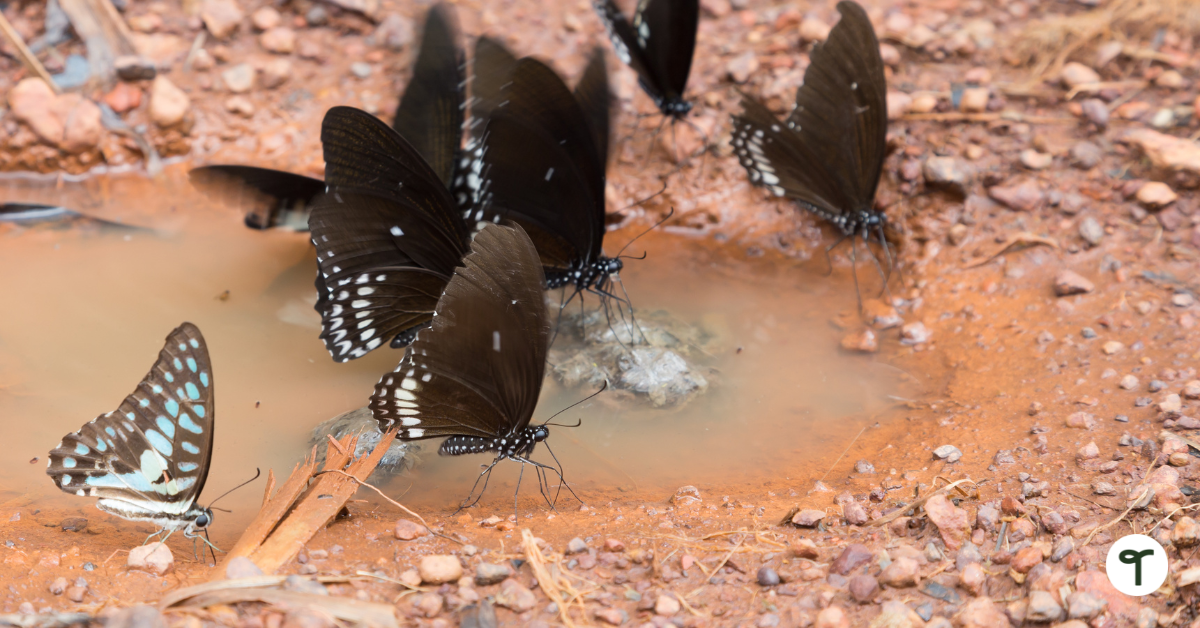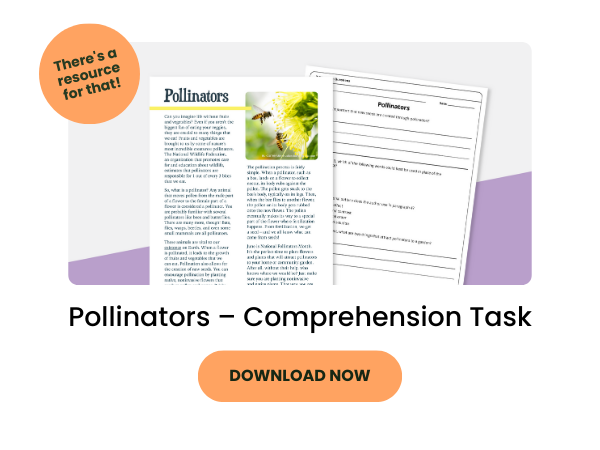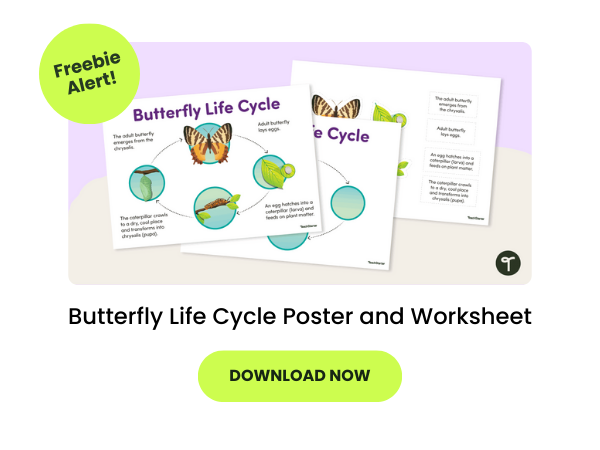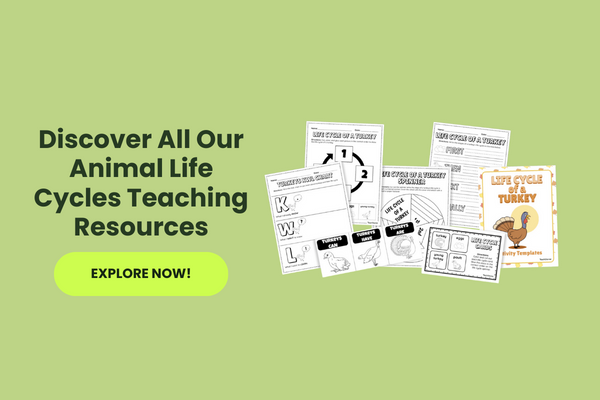Butterfly facts are perfect tools to excite your students about the insect world as they learn about metamorphosis, pollination and so much more in your science classes. Looking for some fun butterfly facts for kids that will knock their socks off … and get them thinking?
Our teacher team has pulled together some of our favorites that we use in our own science and math lessons. Be sure to scroll all the way to the end to see how these butterfly facts can be used in your lesson plans throughout the school year.
Butterfly Facts for Kids
Butterflies are so special that there’s even a National Butterfly Day! Its official name is National Learn About Butterflies Day, and it’s held on March 14 to celebrate these tiny yet crucial contributors to a healthy ecosystem.
The beauty of butterflies is that they can teach students of all ages (adults too). As you explore the butterfly life cycle, introduce the insect world or celebrate National Butterfly Day, here are some fun butterfly facts to share!
1. There are 17,500 different species of butterflies! Only about 750 of those 17,500 live in the US.
2. Most butterflies cannot hear! Instead of communicating through sound, they communicate visually and chemically. However, some butterflies can hear, such as satyrids. Scientists believe these butterflies can hear low-pitched sounds, such as the flapping wings of predatory birds.
3. Butterflies can see in green, yellow and red using the 6,000 lenses in their eyes! This helps them spot flowers and other food sources.
4. Many butterflies can taste with their feet to find out whether or not the leaf they sit on is good to lay eggs on to be their caterpillars’ food.
5. Butterflies are important pollinators. They cross-fertilize cotton flowers that bees don’t visit. One study showed that they help add about $120 million annually to Texas cotton harvest alone!
6. Butterflies have exoskeletons meaning their skeleton is on the outside of their bodies. This ensures that water stays inside their bodies so they don’t dry out.
7. Butterflies have four wings — two fore wings and two hind wings.
8. A group of butterflies is called a kaleidoscope.
9. Butterflies use their antennae to smell.
10. Butterflies love sunshine! They are cold-blooded and need heat to be able to move. This is why you may see them resting in the sunlight.
11. Butterflies eat with a tube-like tongue called a proboscis.
12. Male butterflies drink from mud puddles in a process that’s known as “puddling.” They do this to extract minerals that aren’t in flowers.

13. The fastest butterflies are skippers, which can fly 37 miles per hour! Most butterflies fly between 5 and 12 miles per hour.
14. Butterflies cannot fly if their body temperature is less than 86 degrees.
15. Butterfly wings look smooth and silky, but they’re actually made up of tiny scales.
16. The average butterfly lifespan is only about 15 to 29 days. Some types only live a few days, but the Brimstone butterfly has the longest lifetime of adult butterflies. They can live as long as 9 to 10 months!
17. When the butterfly comes out of the chrysalis, its wings come out crumpled! It will then hang upside down until its wings fully form.
18. Nearly every butterfly species has its own combination of patterns, colors, and wing shapes.
19. Butterflies fly in bright sunshine, while moths are active mostly at night. They are both grouped into the same family, “Lepidoptera.”
20. Antarctica is the only continent where no ‘”Lepidoptera” is found (meaning butterflies and moths).
21. As temperatures cool in late summer and early fall, monarch butterflies migrate as far as 3,000 miles from the northern US and Canada all the way to Mexico to search for warmer weather during the winter months. Adult monarchs that begin the journey will not make it to Mexico.
Once an adult butterfly lays its eggs, it will die, and its offspring will continue the journey. It takes about three to five generations of monarchs to finish the full annual migration!

22. Butterflies are members of the insect family, which means they have six legs and three body parts: the head, thorax and abdomen.
23. Butterflies usually lay their eggs on the underside of a leaf to protect them from the elements like rain and wind.
24. Some butterflies, like the Owl butterfly, use camouflage to protect themselves against predators. The large “eye spot” on the Owl butterfly’s wings makes predators think they’re looking into the eyes of an owl!
25. Butterfly wings make a figure-eight motion when they fly instead of straight up and down. This motion pushes air under their wings as the butterfly’s body contracts, propelling it through the air.
Here’s a cool slow-motion video of this movement!
26. The world’s largest butterfly is Queen Alexandra’s Birdwing. It has a wingspan of more than 9 inches!
27. Speaking of size, the world’s smallest butterfly is the Western Blue Pigmy, which is just 0.78 inches across.
28. Butterflies are herbivores and eat from many plants, including nectar from flower centers.
29. Viceroy butterflies mimic the appearance of monarch butterflies to trick predators into thinking they’re toxic to eat.
30. Butterflies don’t sleep like humans do, but many types will rest in groups called “roosting.”
How to Use These Butterfly Facts in the Classroom
Here are some fun ways you can make these butterfly facts take flight in the classroom:
- Use fact 4 to open a discussion on a butterfly’s transformation from egg to adult. Once students understand each stage, start some real-life observation with a butterfly kit! (Discount voucher is included for school use). This video demo of metamorphosis can also engage your students.
- Have your students build a butterfly habitat diorama. They can do this using real plants or craft supplies inside an empty shoebox.
- Use facts 26 and 27 during math class! Students can practice their ruler skills by drawing the size of the largest and smallest butterflies in the world on paper.
- If you teach older students, use fact 21 to discuss monarch butterflies and track their migration using World Wildlife Fund’s social studies lesson: The Great Monarch Migration activity. Continue learning about monarchs with National Geographic’s Monarch Butterfly video.
- Read the classic Eric Carle story, The Very Hungry Caterpillar or watch the short animated version with your class to introduce facts 4 and 23.
- Use fact 28 to discuss how we can help butterflies thrive. This includes planting butterfly favorites such as milkweed and lavender and how to rescue sick butterflies. You can even ask your school’s admin if you can combine a planting activity with butterfly habitats on school grounds.
- Need field trip ideas that include butterflies? See if there’s a zoo in your area with a butterfly garden. You can even see if local botanical gardens include a butterfly exhibit or learning area.











Comments